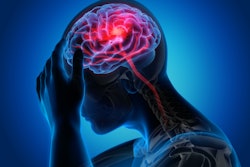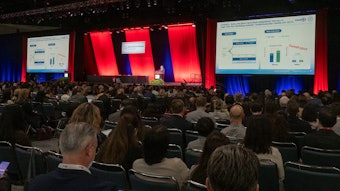2023 Late Breaking Science: Improving stroke thrombolysis, comparing tenecteplase and alteplase, and treating cognitive decline after lacunar stroke

Late-Breaking Science presented during the Thursday #ISC23 Main Event revealed:
- A new strategy to improve stroke thrombolysis.
- Tenecteplase and alteplase are similarly safe, effective, in large Asian trial.
- First benefits from drug treatment following lacunar stroke.
- LACI-2 shows reduction in cognitive decline after lacunar stroke.
Thrombolysis use increased from 4% in 2010 to 14% in 2020 in the traditionally underserved urban community of Flint, Michigan, at the conclusion of Stroke Ready, a community-wide trial to increase stroke thrombolysis in the predominantly Black and low-income community. The trial combined implementation science to optimize stroke care in a safety-net emergency department (ED) and community engagement.
 Lesli E. Skolarus, MD, MS
Lesli E. Skolarus, MD, MS
Dr. Skolarus noted Stroke Ready involved community, hospital and EMS partners from the beginning to design and build interventions to fit their needs and work in their existing systems.
 Sarah Bailey, PhD
Sarah Bailey, PhD
The Stroke Ready Program compared thrombolysis use for acute stroke in Flint during a pre-intervention period from July 2010 to September 2017, and an intervention period from October 2017 to March 2020, when the community education component was halted three months early due to COVID-19.
The combined ED and community intervention did not affect thrombolysis use (odds ratio=1.12, p=0.58). When analyzed separately, the ED intervention was associated with increased thrombolysis use (OR=1.6, p=0.03) but the community intervention was not (OR=0.99, p=0.30).
“In the last decade, Flint went from one of the lowest-performing U.S. communities for delivering acute stroke thrombolysis to one of the higher-performing communities,” Dr. Skolarus said. “This is a testament to the resilience of the community, EMS providers, and ED and stroke providers. The Stroke Ready ED intervention could be tested in EDs with low treatment rates. And we saw that our model of training community members to disseminate stroke education was effective in reaching the community. Now we need to consider how to make stroke preparedness community interventions more effective.”
Tenecteplase not inferior to alteplase in Asian population
 Yongjun Wang, MD
Yongjun Wang, MD
“The major clinical advantage of tenecteplase is its ease of administration as compared with alteplase, therefore tenecteplase may potentially benefit more patients who need thrombolytic treatment,” said Yongjun Wang, MD, director of the Tiantan Comprehensive Stroke Center at China National Clinical Research Center for Neurological Disease in Beijing. “International guidelines haven’t reached a consensus yet to replace alteplase with tenecteplase, although the 2022 update of Canadian guidelines recommend either agent for patients who can receive IVT within 4.5 hours of stroke symptom onset or time last known well.”
TRACE-2 was an open label, randomized controlled noninferiority trial with 716 patients receiving tenecteplase and 714 receiving alteplase between June 2021 and June 2022. All patients had a National Institutes of Health Stroke Scale (NIHSS) score of 5-25 within 4.5 hours of onset. The primary outcome was the proportion of patients who had a modified Rankin Scale (mRS) score of 0-1 at 90 days. The primary safety outcome was symptomatic intracranial hemorrhage within 36 hours from symptom onset.
The primary outcome occurred in 62% of the tenecteplase arm versus 58%of the alteplase arm with a risk ratio of 1.07 (CI 0.98-1.16). There were more symptomatic intracranial hemorrhages within 36 hours in the tenecteplase arm, 2% versus 1.8%, RR=1.18 (CI=0.56-2.50) and more deaths within 90 days, 7% versus 5% (RR-1.31, CI=0.86-2.01), but neither difference was statistically significant.
“TRACE-2 provided supporting and complementary evidence that tenecteplase has similar efficacy and safety profiles compared to alteplase,” Dr. Wang said. “The results may promote consensus among physicians for replacing alteplase with tenecteplase and updating clinical guidelines.”
The TRACE-2 trial was published simultaneously in The Lancet.
Cilostazol, isosorbide mononitrate show positive results in lacunar stroke
A novel combination of cilostazol, a phosphodiesterase 3 inhibitor commonly used to relieve the painful symptoms of intermittent claudication, plus isosorbide mononitrate (ISMN), widely used to treat ischemic heart disease, showed feasibility and early safety and efficacy in lacunar stroke. The phase II LACunar Intervention Trial-2 (LACI-2) showed fewer recurrent ischemic strokes and TIA events, less dependency, less cognitive impairment and improved quality of life for the two-drug combination compared to control.
 Joanna M. Wardlaw, MD, FMedSci, FAHA
Joanna M. Wardlaw, MD, FMedSci, FAHA
LACI-2 enrolled 363 of a planned 400 patients across 26 U.K. hospitals between February 2018 and May 2021. The mean age of patients was 64 with a median of 79 days from stroke onset to randomization, and 31% were female. Seven percent of patients had a prior stroke, and all had a modified Rankin Scale (mRS) of ≤2.
Patients were randomized to cilostazol 100 mg bd, ISMN 25 mg bd, both, or neither, for one year. Efficacy endpoints were recurrent vascular events, mRS, cognitive impairment and quality of life. Four patients died during the trial, Dr. Wardlaw reported, and there were four reported bleeding events, none intracranial.
ISMN alone reduced recurrent vascular events and cognitive impairment and improved quality of life versus control. A numeric trend for reducing dependency just missed statistical significance. Cilostazol alone had no effect on recurrent vascular events, a nonsignificant trend for reducing cognitive impairment, and significantly reduced dependency. The combination of ISMN + cilostazol showed significant reductions in recurrent vascular events, cognitive impairment, dependency and improved quality of life.
“The trial was not designed with the intention to detect efficacy,” Dr. Wardlaw said. “However, it is difficult to ignore these important efficacy findings in this population, which provide strength for a larger trial. It needs further testing, but this could be the first signals of something that might help delay cognitive decline in people with small vessel disease (a major cause of vascular cognitive impairment) as well as improve outcomes from lacunar stroke.”
 Philip Bath, DSc, FAHA
Philip Bath, DSc, FAHA
“These results support an intrinsic endothelial, non-atheromatous, pathology for small vessel disease and show that maybe we can do something about it,” said Philip Bath, DSc, FAHA, UK Stroke Association, professor of medicine, University of Nottingham, Nottingham, UK. “Both of these drugs have been approved, they are cheap, and are already used in other types of cardiac disease.”
Lacunar strokes are distinct from the more common large vessel strokes, Dr. Bath said. Small vessel disease occurs at a slightly younger age and is twice as frequent in men than in women. Cognitive impairment increases over time after lacunar stroke, eventually affecting up to 60% of patients.
LACI-2 randomized 363 lacunar stroke patients across 26 centers in the UK between 2018 and 2021 to receive cilostazol alone, ISMN alone, both drugs, or neither for 1 year. The primary cognitive outcome measures included the Montreal Cognitive Assessment (MoCA), MoCA modified for telephone use (t-MoCA), Telephone Interview for Cognitive Status-modified (TICS-M), Verbal fluency, Trail Making Test Part B (Trails B), any diagnosis notification from a clinic, and the Informant questionnaire on cognitive decline in the elderly (IQCODE).
Patients who received ISMN alone showed a significant improvement in cognition vs. control, acOR=0.55 (p=0.008), as did the combination of ISMN + cilostazol, acOR=0.44 (p=0.015). Cilostazol alone showed a nonsignificant trend for reduced cognitive impairment, acOR=0.89 (p=0.61). Preplanned subgroup analysis showed no differences by age, sex, educational level, time since stroke, smoking status, hypertension, diabetes, history of stroke/TIA, systolic blood pressure NIHSS and other variables.
“It is important to note that this intervention was on top of guideline-based therapy with antiplatelet and blood pressure management,” Dr. Bath said. “And it is possible that one year is not long enough to see the maximal effect of these drugs. A follow-up phase 3 trial in lacunar stroke, LACI-3, is in preparation.”











